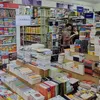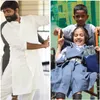Observation is not a passive act but an active engagement: Kalakriti Art Gallery enthralls and provokes viewers
In our photo essay from a leading art gallery in Hyderabad, we showcase some creative highlights and curator perspectives.
Launched in 2014, PhotoSparks is a weekly feature from YourStory, with photographs that celebrate the spirit of creativity and innovation. In the earlier 785 posts, we featured an art festival, cartoon gallery. world music festival, telecom expo, millets fair, climate change expo, wildlife conference, startup festival, Diwali rangoli, and jazz festival.
Hyderabad’s Kalakriti Art Gallery wrapped up an outstanding exhibition this month, titled Can You See What I See? Check out our photo essays from exhibitions at its earlier location here.

The 12 featured artists, some of whose works are pictured in this photo essay, are Ajay Dhapa, Ajay Lakhera, Ganesh Das, Girjesh Kumar Singh, Gulab Kapadiya, Kamal Pandya, Kapil Anant, Neha Verma, Nitasha Jaini, Raka Panda, Sanjoy Patra, and Srinivas Pulagam. The artworks are priced from Rs 45,000 to Rs 4.8 lakh.
Curated by Supriya Lahoti Gandhi and Ruchi Sharma, the exhibition shows how different people perceive and experience the same environment in entirely unique ways. These differences are shaped by individual lives and perspectives.
The 12 artists bring forth their observations, drawn from their daily lives and surroundings, transforming the ordinary into captivating reflections, according to the curators.
The artists contrast the visible and the invisible elements of the landscape and the intangible stories beneath the surface.

Kalakriti Art Gallery was established in 2002 by Rekha and Prashant Lahoti, and it has consistently pushed the envelope of Indian art exhibitions. Showcased artists over the years include Raja Ravi Varma, Balakrishna Pant, Anant Desai, Abanindranath Tagore, MF Husain, Krishen Khanna, and Ganesh Pyne.
Curators whose exhibitions have been featured at Kalakriti include Ranjit Hoskote, Nancy Adajania, William Dalrymple, Kavita Singh, Alka Pande, and Jyotirmaya Sharma. Traditional and indigenous art such as Pichwai, Gond and Saura art have also been showcased.
Each piece in the current exhibition reflects dynamic engagement of themes through conceptual lenses, perceptive frameworks, and even literal elements of varying texture.
Some artists share narratives through forms, patterns, and figures, while others study nature, architecture, and human interactions, the curators explain.

In addition to the artists’ own observations, the exhibition invites public interpretation of the artwork as well, which adds new layers and connections to the collective art experience.
The gallery regularly hosts workshops, panel discussions, and film screenings centred around art. Its partners include Alliance Française, Goethe Zentrum, and University of Hyderabad.
Artists don’t just see; they interpret what they see through emotions and interact with the environment, revealing the complexity of experiences. Observation is not a passive act but an active engagement, the exhibition curators sign off.
Now what have you done today to pause in your busy schedule and harness your creative side for a better world?














(All photographs were taken by Madanmohan Rao on location at the gallery.)
Edited by Swetha Kannan










